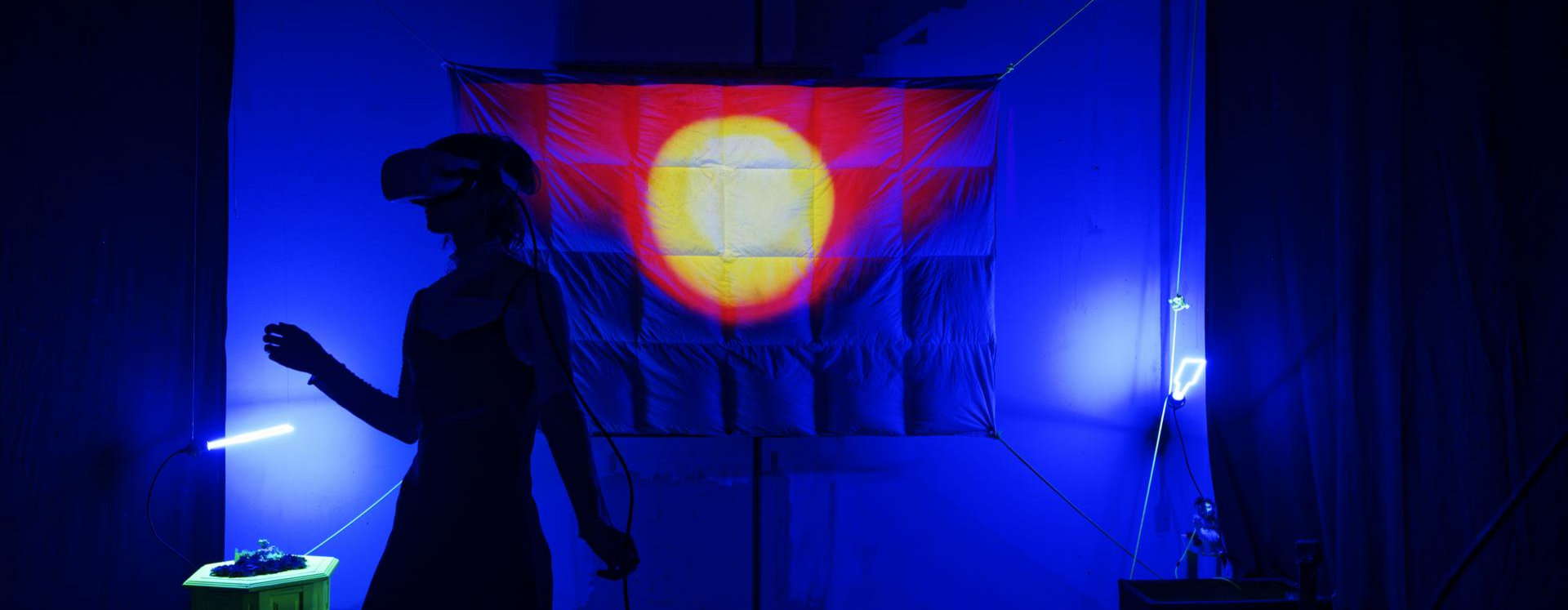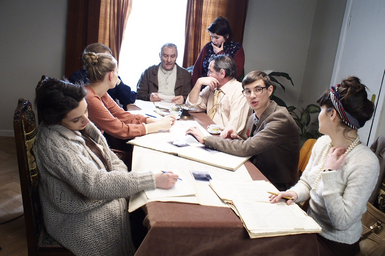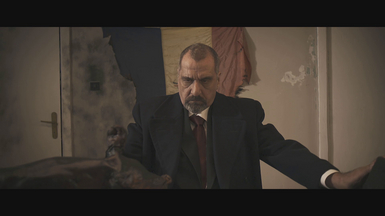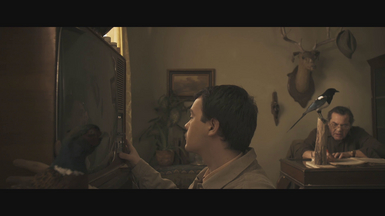It's important to escape from reality
Anca Oproiu (1989) is fascinated by the effects of colour. After her graduation at the National University of Film and Drama in Bucharest, Romania, she has continued her investigations at the Master of Film. While editing the graduation film to be presented in June 2014, she tells about her research.
"My bachelor’s graduation paper was about the symbolism of colour and the way colour affects perception and cognition in art. After my education in Romania, I felt I needed more freedom to explore colour. My starting point was the use of colour as an emotion in film. For more than a year, I‘ve been reading, talking and watching a lot. However, I couldn’t get any idea to create anything. After all, so many things have been said and invented already.
Characters
Somebody raised a question: how would you describe the colour blue to a blind person? It was this question that stuck to me. I didn’t want to use clichés like ‘an apple is red’ or ‘the sky is blue’. Instead, I articulated that our favourite colour says a lot about our character. This marked a new start of my research. I drafted colour-character sheets with questions about first memories, biggest fears and greatest accomplishments, et cetera. On the basis of this information, I started to build seven characters.
Conspiracy
As a next step, I developed a framework in order to connect these characters to each other and to a specific situation in a godforsaken Romanian ghost town in 1985. It was the era of strong repression. One of the effects of the regime was a widespread and complete lack of initiative among civilians. Many people perceived their lives as empty and stopped taking responsibility. In my film, seven people, based on seven colours, live their lives in different kinds of loneliness. They don’t want to deal with their problems. Instead, they start conspiring. Since they don’t want to collaborate actively with the regime, they start a so-called conspiracy house. This part is based on an actual historic practice. The totalitarian repression of the communist regime was based on conspiracy. In an effort to escape this repression, people would run a local secret police office in their apartment – hoping this would safeguard them from indiscriminate repressive sanctions by the regime.
Grey
Str. Drapelului, nr. 0 is a black comedy. It is autumn 1985. In the suburbs of Triumf, a Romanian town, seven people run a local secret police office in their ground floor apartment. They are a former Miss Seaside, a retired train inspector, a lonely huntsman, a hipped cook, a lovelorn boyscout and two nonidentical twin sisters. Unfortunately for these bored and conspirative characters, the crime rate in Triumf is basically zero. They risk losing their precious office because they have nothing to report and nobody to arrest. Everything changes one hazy night when Mr. Grigorescu (gri = grey, ed.), their neighbour across the street, an apparently harmless electrician and handyman, comes home after having finished his studies. His simple arrival is enough of a reason for his neighbours to open a case, start an investigation and come up with a plan in order to arrest this enemy of the state. They invite him over several times with the excuse that they have problems with the plumbing, the stereo, the television, the radiator, only to get a chance to ‘interrogate’ him. After two months of intense interrogation, scheming and secret meetings, they come to the conclusion that Mr. Grigorescu is not an enemy of the state but on the contrary a role model of the young socialist worker. What they are not aware of is that Mr.Grigorescu has been acting the entire time and that he is the author of a great master plan that will bring their secret office to an end. By pretending to be a humble, hardworking young socialist man, he wins their trust. But he causes a disaster on the night of 25 December 1985, while the higher committee of the State Security comes together to evaluate the case.
Small time nobody
In developing this project, I had an abstract starting point. It felt as if I was building a puppet, adding every day small features in order to make it a whole. The method of constructing characters and their story on the basis of colour allowed me to escape reality, which is important to me. The resonances of the colour yellow gave me the freedom to play and develop the rest of the characters. The story of Gray is being told by the colours and the colours are described through the way they interact with Gray. The seven characters blend into one, creating a collective persona, a rainbow of the Romanian Security based on paranoia, blindness, conspiracy and boredom. The tone I am using in describing my characters is cynical since they take themselves very seriously. They are conspiring even when there is nothing to conspire. I would describe them as being a small time nobody, a wannabe somebody. The goal of this short film was to create a funny and absurd image of communism in Romania from the point of view of the young generation. We never got the chance to witness the entire madness that was going on in our country but we do all have this rather ‘poetic’ and saturated image of that time. This image is being conserved by the absurd stories our relatives and neighbours keep telling us in a very detailed way, even after more than twenty years.
Moments without judgements
The goal of this short film was to create a funny and absurd image of communism in Romania from the point of view of the young generation. We never got the chance to witness the entire madness that was going on in our country but on the other hand, we have a rather 'poetic ' and saturated image of that time. This image is being conserved by the absurd stories our relatives and neighbours keep telling us in a very detailed way, even after more than twenty years.
I enjoyed doing this master. The staff is deeply committed to supporting the students. They have the tolerance and the curiosity to bear with you while you venture onto unknown territory. They know the importance of postponing judgement during a certain stage, whereas they also know how to elaborate and motivate their judgement during other stages in the process. That's real support."
April 2014




